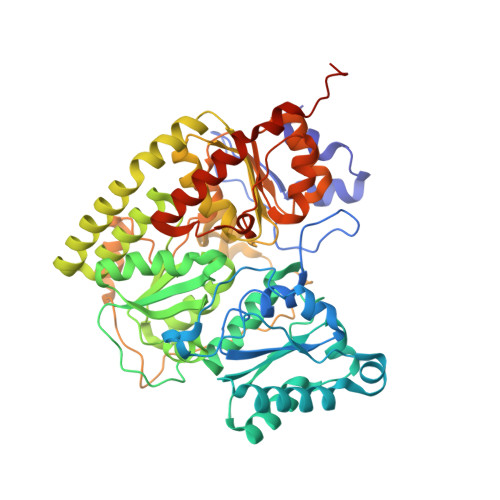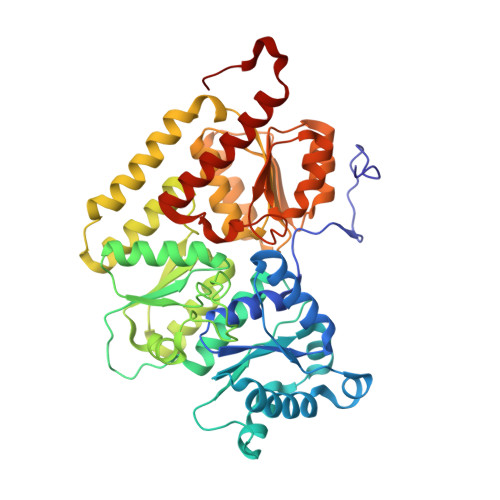Nitrogenase MoFe protein from Clostridium pasteurianum at 1.08 angstrom resolution: comparison with the Azotobacter vinelandii MoFe protein.
Zhang, L.M., Morrison, C.N., Kaiser, J.T., Rees, D.C.(2015) Acta Crystallogr D Biol Crystallogr 71: 274-282
- PubMed: 25664737
- DOI: https://doi.org/10.1107/S1399004714025243
- Primary Citation of Related Structures:
4WES - PubMed Abstract:
The X-ray crystal structure of the nitrogenase MoFe protein from Clostridium pasteurianum (Cp1) has been determined at 1.08?? resolution by multiwavelength anomalous diffraction phasing. Cp1 and the ortholog from Azotobacter vinelandii (Av1) represent two distinct families of nitrogenases, differing primarily by a long insertion in the ¦Á-subunit and a deletion in the ¦Â-subunit of Cp1 relative to Av1. Comparison of these two MoFe protein structures at atomic resolution reveals conserved structural arrangements that are significant to the function of nitrogenase. The FeMo cofactors defining the active sites of the MoFe protein are essentially identical between the two proteins. The surrounding environment is also highly conserved, suggesting that this structural arrangement is crucial for nitrogen reduction. The P clusters are likewise similar, although the surrounding protein and solvent environment is less conserved relative to that of the FeMo cofactor. The P cluster and FeMo cofactor in Av1 and Cp1 are connected through a conserved water tunnel surrounded by similar secondary-structure elements. The long ¦Á-subunit insertion loop occludes the presumed Fe protein docking surface on Cp1 with few contacts to the remainder of the protein. This makes it plausible that this loop is repositioned to open up the Fe protein docking surface for complex formation.
Organizational Affiliation:
Division of Chemistry and Chemical Engineering, California Institute of Technology, Pasadena, CA 91125, USA.




















